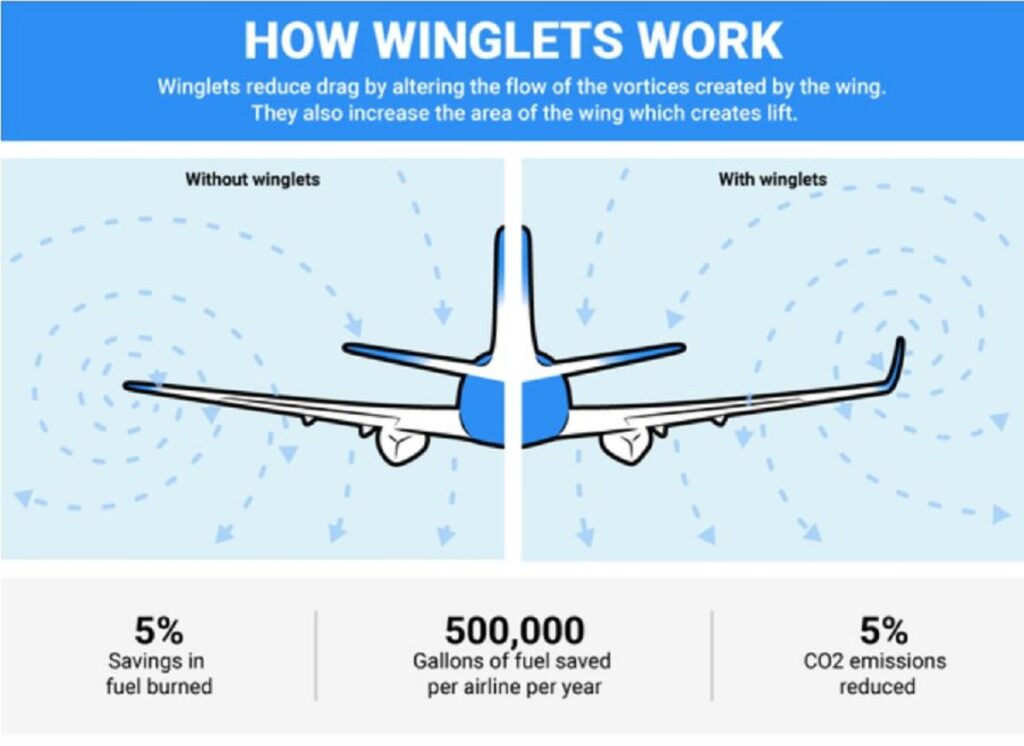The primary difference between a Boeing 737 equipped with winglets and one without them lies in their aerodynamic efficiency and performance characteristics.
A Boeing 737 equipped with winglets features these distinctive wingtip extensions that serve multiple purposes. Winglets are designed to reduce lift-induced drag significantly, enhancing fuel efficiency by improving aerodynamics. They provide additional lift, allowing the aircraft to climb more efficiently, especially from climb-limited airports or obstacle-restricted runways. Moreover, they contribute to a reduction in climb thrust, potentially extending engine life and lowering maintenance costs. The environmental impact is notable too, with winglets decreasing both noise emissions and NOx emissions, aligning with environmental standards and possibly offering savings on airport noise quotas or penalties.
In conclusion, a 737 with winglets experiences reduced fuel consumption during cruise due to decreased drag, leading to lower fuel costs and increased range. Additionally, it allows for improved cruise performance, enabling the aircraft to reach higher altitudes sooner, which can be advantageous in congested airspaces, potentially providing more direct routes and shorter flight times.
Moreover, there are differences in the aircraft’s handling and operational aspects. For instance, there may be slight variations in rotation rate and take-off trim between a winglet-equipped 737 and a non-winglet aircraft. Additionally, there is a slight reduction in the dry “maximum demonstrated” crosswind limit with winglets due to regulatory considerations (the value has been reduced from 34 kts to 33 kts), although no weather-induced directional effects have been observed due to the presence of winglets.
Currently, approximately 85% of all new 737s come fitted with winglets, especially prevalent in the 800 and 900 series and, naturally, all BBJs. The decision often boils down to a balance between costs and benefits. Installing winglets is not cheap and after its installation, they contribute an additional 170-235kg (375-518lbs) to the aircraft’s weight, depending on whether they were incorporated during production or as a retrofit. While this added weight impacts fuel consumption, the extended range enabled by winglets offsets this effect. In simple terms, if the average flight sector is short (less than one hour), the benefits of winglets might not be as significant, unless specific advantages such as reduced noise or regular operations from obstacle-limited runways are necessary.
Author – Antonio Moran ( Certified Flight Instructor )






